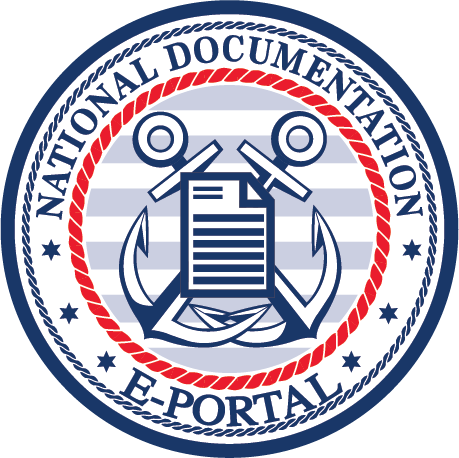Documented vessels must display their name and hailing port on the hull exterior for proper identification, as they don’t show official numbers like state-registered boats. When you need to change the name of a boat or modify your hailing port, specific federal marking requirements must be followed, including character limits, acceptable naming conventions, and proper display.

These requirements ensure your vessel remains compliant with Coast Guard regulations while maintaining clear identification for maritime authorities and other boaters.
The marking requirements serve as the primary identification system for documented vessels operating in federal waters. Unlike state-registered boats that display registration numbers, documented vessels rely entirely on their name and hailing port combination for official identification.
Our service helps vessel owners understand these requirements and ensures their marking choices comply with all federal regulations before processing their documentation applications.
Vessel Name Requirements for Documented Boats
Your vessel’s name must meet specific criteria established by federal maritime regulations. The name can contain only letters from the Latin alphabet, Arabic numerals, or Roman numerals, with a maximum length of 33 characters including spaces. Additionally, the name cannot be identical or phonetically similar to distress signals, contain profane language, or include racial or ethnic slurs.
Our documentation service guides clients through the name selection process by reviewing their proposed names against federal requirements before submission. We’ve helped countless vessel owners avoid delays by identifying potential naming issues early in the process.
Many clients don’t realize that creative spellings or abbreviations might create pronunciation conflicts with emergency signals, which could result in name rejection. You can choose your name when you complete initial vessel documentation.
The federal regulations governing vessel naming can be found in 46 CFR Part 67, which outlines all requirements for vessel documentation including naming conventions. Our service stays current with these regulations to ensure every name we process meets current federal standards.
Character Limits and Formatting Standards
The 33-character limit includes all spaces, punctuation, and symbols in your vessel’s name. This restriction often surprises new boat owners who haven’t considered how spacing affects their total character count.
Our service includes character counting and formatting verification for all name change requests. We review each proposed name for length, acceptable characters, and potential pronunciation conflicts before submitting applications to prevent costly delays and resubmissions.

Hailing Port Requirements and Selection Guidelines
Your vessel’s hailing port must be a real place within the United States that appears in the Department of Commerce’s Federal Information Processing Standards Publication. The hailing port serves as your vessel’s official home port and must include the state, territory, or possession where it’s located. This designation doesn’t restrict where you can operate your vessel, but it establishes your vessel’s official residence for documentation purposes.
Many boat owners want to select their actual residence or favorite cruising destination, but not every location qualifies as an acceptable hailing port. We help clients find nearby qualifying locations that meet their preferences while satisfying federal requirements.
The Coast Guard’s National Vessel Documentation Center has final authority over hailing port appropriateness, but our experience helps clients avoid potential disputes. We review each proposed hailing port against current federal databases and flag any potential issues before submission.
Geographic Restrictions and Selection Strategy
While you can choose any qualifying U.S. location as your hailing port regardless of where you actually keep your boat, strategic selection can offer practical advantages. Some owners choose locations based on strong maritime traditions or personal significance.
Our service helps clients understand the implications of their hailing port selection beyond simple compliance.
How to Change a Name of a Boat Hailing Port
Vessel owners can modify their name or hailing port at any time by submitting the proper application through our documentation service. However, any name change requires prior approval from the authorities before you can legally display the new name on your vessel. Unauthorized name changes can result in documentation violations and potential penalties.
Our change processing service streamlines this procedure by preparing all required paperwork and ensuring your application meets current federal standards. We handle the entire submission process, track your application status, and notify you immediately upon approval. This comprehensive approach eliminates guesswork and prevents common mistakes that delay approvals.
We frequently help clients who attempted to change their names independently, only to have their applications rejected for technical errors. That doesn’t happen with us. Our service ensures all applications use current forms and meet updated requirements.
The documentation change process typically takes several weeks, during which you must continue displaying your original name.
Processing Timeline and Documentation Updates
When you decide to change a name of a boat or a hailing port, we can help in multiple ways. Our service coordinates this entire process, ensuring your new certificate reflects all requested changes accurately. We also provide guidance on when you can legally begin displaying your new name and port designation.
We help clients understand that changing their vessel name affects more than just hull markings. Remember, always, your documented vessel’s name is going to be associated with you. It’s not just something that you’ll see once a year (or once every five years) when it’s time to renew boat documentation.
This name will make a first impression at every port, every harbor, every marina. You want to choose something that you won’t mind be associated with for as long as you own the boat (if not much longer).
Physical Marking Requirements and Display Standards
Once your name and hailing port are approved, they must be permanently marked on your vessel’s hull in accordance with federal display requirements. The markings must be clearly visible, permanently affixed, and meet specific size and placement standards. These requirements ensure consistent identification across all documented vessels.
Our service provides detailed marking guidance to help clients comply with display requirements after their applications are approved. We offer specifications for letter sizing, placement locations, and acceptable marking methods to prevent compliance issues during Coast Guard inspections.
We regularly advise clients on marking placement challenges, particularly for vessels with complex hull designs or limited space. There are many ways to achieve compliant marking while maintaining their boat’s aesthetic appeal.
Proper marking compliance protects your documentation status and prevents potential penalties during routine inspections. Our comprehensive guidance ensures your vessel displays its identification correctly from the moment your changes are approved.
Maintenance and Compliance Monitoring
Vessel name and hailing port markings must remain clearly visible and legible throughout your vessel’s documented life. Weather, UV exposure, and normal wear can fade or damage markings, potentially creating compliance issues.
We provide ongoing support for marking maintenance, including recommendations for marine-grade materials, professional application services, and inspection schedules. This proactive approach helps prevent compliance problems that could affect your documentation status or create issues during Coast Guard boardings.
A Place to Change the Name of a Boat and More
Yes, we make it easier to change the name of a boat as well as the hailing port, but, we also offer much more than that. Through our portal, you can renew your documentation, reinstate it, find out more about a boat through a boat documentation search as well as so much more. You can view everything we offer through our portal.

